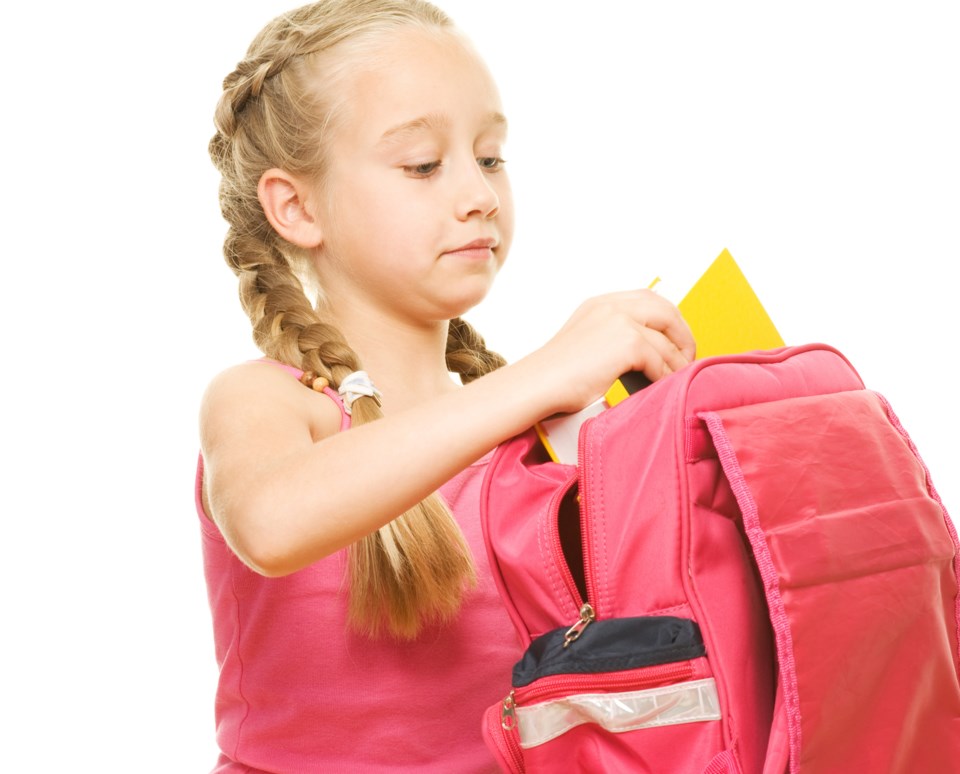Karen Johnson is a North Vancouver chiropractor, and she offers the following information about choosing the right backpack for your kid this school year.
It’s that time of year again to start thinking about back-to-school shopping, and one of the most important purchases parents and caregivers will make is to find the right backpack for their child.
New research indicates that there are long-term health risks associated with children wearing a poorly designed or overloaded backpack. Studies show that hauling heavy backpacks on a continual basis can cause stress to the growing spine.

A heavy backpack carried on the back can potentially injure the neck, shoulders, and back, cause numbness in the arms and reduce blood flow to the surrounding muscles and tissues.
Poor posture can also develop when a heavy backpack causes the child to lean forward, reducing their ability to maintain balance. The shoulders can become rounded and the resulting stress on neck muscles can lead to headaches and neck pain.
A recent study has found that choosing the right backpack and taking care to distribute the weight evenly can make a big difference in avoiding painful injuries.
Here are some tips parents and caregivers should follow when making this very important purchase.
- Find a backpack that is made of light materials. such as vinyl and canvas.
- Backpacks with two straps distribute weight much better than bags that are slung over the shoulder.
- The top of the backpack should not extend higher than the top of the shoulder and the bottom should not fall below the top of the hipbone.
- The shoulder straps should be at least two inches wide, be padded, and should not fit too snugly around the arms.
- Choose a backpack with a padded back for added protection and support.
- A hip strap or waist belt can take as much as 50 to 70 per cent of the weight off the shoulders and spine. Try to find a backpack that has one.
- Choose a backpack with lots of pockets to help distribute weight more effectively.
Now that you have an idea of what kind of backpack is best for your child, it’s also important to consider how much weight is safe for your child to carry. The general rule of thumb is no more than 15 per cent of the child’s body weight or 10 per cent for elementary school children.
Lastly, it’s also important to know how to get a backpack on so as to avoid injury. If no one is available to give a helping hand, squat or kneel to pick up the backpack and place it on a counter, chair or table at waist height, before slipping it on.
Avoid twisting when lifting and lift with the legs, bending at the hips and knees to put on one shoulder strap at a time.
Following these tips can help ensure your child’s back is protected. For more information on choosing the right backpack for your child, contact your local chiropractor.
Karen Johnson is a chiropractor at Lifemark Lonsdale, a multidisciplinary clinic located in North Vancouver. She treats a variety of conditions and patients of all ages, including infants and seniors. Johnson completed her studies at the Canadian Memorial Chiropractic College in Toronto and has been treating patients since 2009.
This story originally appeared in a special Back to School section of the paper.



